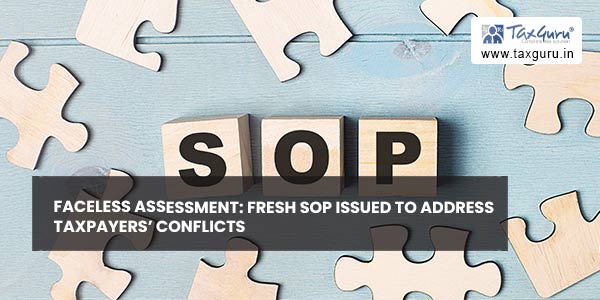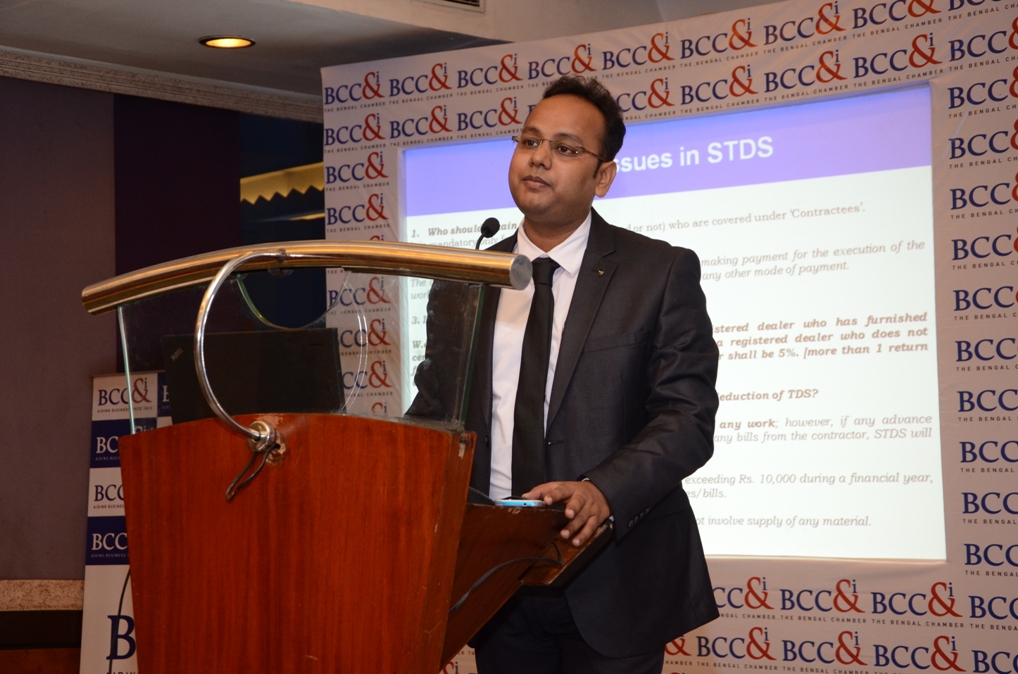Since inception, Faceless Assessments witnessed various conflicts between the assesses and the Revenue Authorities. The biggest conflict was the invocation of Best Judgement Assessments without giving any opportunity of being heard or taking cognizance of the written submissions of the assesses. Other disputes included – not being granted adjournments, too many questionnaires been sent to assesses, too much of repeated information being asked for, etc.
The NaFAC has issued SOP for various units viz., Assessment unit (AU), verification unit (VU, Technical unit (TU) and Review unit (RU) under the Faceless Assessment provisions of Sec 144B, to provide for the procedures to be followed by various units for conducting faceless assessment. Most of these disputes have been addressed therein. However, the same is with a Caveat that the SOPs is strictly for Departmental Use only. If any conflict in the SOP is noticed with the statute, then the provisions of the Statute shall prevail. Hence this cannot be used against the Department in a Court of Law.
For the AU, the following are the major points –
1. Question on specific grounds viz., ground on which case is selected or set aside or reopened shall be included in the framed questionnaire u/s 142(1) – This is a welcome move and hence incase the SCN going forward is other than these grounds, then the same can be challenged.
2. Further all internal and external information available with the department including other databases like MCA, etc should be used for making the initial questionnaire. Effort should be made to make the initial questionnaire exhaustive, so that no more questionnaires are required.
3. The AU would work in a Time Bound Manner and specific requirements in this regard have been laid down in the SOP –
a. Time limit of 15 days for initial notice and 7 days for subsequent notices shall be provided for compliance by the assesse. This time limit may be curtailed in time-barring cases.
b. Adjournment shall be granted up to a period of 7 days – The no:of adjournments allowed are not mentioned. However as per the principles of natural justice, it is possible that atleast 3 adjournments be granted.
c. In case of non-compliance of notices by the assessee, reminder notices shall be sent to all the registered email IDs with a request to comply within 5 days.
d. Further, physical letter thorough speed post or SMS in the registered mobile number may be sent.
e. Penalty under section 271(1)(b) may be initiated and also Show-cause notice u/s 144 shall be issued.
f. After examining the reply of the assesse, additional questions may be framed.
g. SCN shall be issued where any addition or disallowance is proposed and shall give at least 7 days’ time to the assesse to respond. This 7 days’ time limit may be curtailed in time barring cases.
h. Within 2-3 days of the request of the assesse, the personal hearing shall be mandatorily granted to the assesse.
i. The adherence to principles of natural justice has been given due importance as per the SOP.
4. The assessing officer will prepare an income and loss determination proposal (ILDP) after considering the taxpayers’ reply to a show-cause notice and a personal hearing in each case as follows –
a. ILDP should be fair and judicious.
b. The assessing officer must submit it for risk analysis within a reasonable time.
5. The faceless authority has even defined roles of the AU, VU, TU and RU in the revised SOP, which was absent earlier.
6. The authority also suggested key conditions for verifying the assessment case. It should be done in case of non-availability of digital footprint of “third person” (other than assessee). The assessing officer can seek verification if it requires — cross verification of evidence, examination of books, recording of statement, examining of witness, etc.

7. The faceless authority has even defined roles of the assessment unit, verification unit, technical unit and review unit in the revised SOP, which was absent earlier.
8. Further, to improve compliance, the department will send a centralised communication to taxpayers in case of non-responsiveness of the notices.
9. The assessing officer can also seek special audit in a specific case such as nature and complexity of accounts, volume of accounts, doubts about transactions, and specialised nature of business activity
While this SOP is a positive step by The NfAC, yet the fact that it cannot be used by the assesses would mean that it may not have the desired impact on ground. It is important that atleast the salient features of this SOP be codified by the CBDT in the form of a Circular such that it becomes binding on the officers and invokable by the assesses.
1. Even NIL Income is disclosure of Income
It is the mandate of Law that the assessee should be put to notice before making adjustment u/s 143(1)(a). Any adjustment sans any notice is vitiated. This is a well-accepted principle and has to be followed by the Authorities at all levels. AO should make a proposal u/s 143(1)(a) before making adjustments.
Further, Hon’ble Delhi High Court in the case of Commissioner of Incometax-15 v. Relcom [2015] 62 taxmann.com 190 (Delhi) affirmed that the credit cannot be disallowed to the person on the mere ground that assessee has not shown the income in its income tax return. So, incase the income is a pass through one and the income disclosed is NIL, there remains no question of disallowance of the corresponding TDS.




